Blog
The 5 Things You Need To Know About Swirling Wine
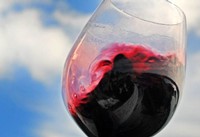
Your friend pops open a magnificent bottle of 94 point 2013 YAO MING Napa Valley Cabernet Sauvignon, pours herself a glass, and starts swirling it around. She's not tasting it. She's not even looking at it yet. Just swirling it around and around her glass. Is this the ultimate in pretense or does she know something you don't?
The truth is, she may know 5 things you should know about swirling wine...
1. Wine is primarily "tasted" with the nose. Believe it or not, the complexity of a wine's taste is created through our nose and not our mouth. Our taste buds can distinguish sour, bitter, salty, sweet and savory. The wide array of fruit, earthy, floral, herbal, mineral and woodsy flavors present in wine are derived from aroma notes sensed by the olfactory bulb. When a wine is swirled, literally hundreds of different aromas are released, the subtlety of which can only be detected with the nose. By swirling, a wine's aromas attach themselves to oxygen (and are thus less masked by alcohol) and are easier to smell. If you want to test the power of the nose, try plugging your nostrils and tasting the wine at the same time.
2. Swirling actually eliminates foul-smelling compounds. Oxygen at work again! Swirling the wine in the glass enables some evaporation to take place, which means more of the volatile compounds will dissipate. Some of these compounds include sulfides (matchsticks) and sulfites, (rotten eggs).
3. Swirling in a wide glass is more effective than a narrow glass. Have you seen those huge Reidel glasses that look like they could hold half a bottle of wine, and wondered what was the point of an enormous wine glass like that? More space in the wine glass means the wine gets more surface area, and thus more exposure to oxygen. This is especially helpful with older wines. This is also the reason why your Sommelier pours only a small amount in your glass when you first taste the bottle: She wants the wine to have optimum exposure to oxygen when you swirl, smell and taste.
4. Swirling exposes the "legs" of a wine, revealing its viscosity. The way the wine swirls gives you a first indication of the wine' "texture:" its thickness or viscosity. A dense wine, full of tannins or sugar will tend to spin more slowly around the glass, sticking to the sides.
5. Yes, as a matter of fact, it does look cool. But here's a little trick so you look like a pro and covered in wine from your swirling 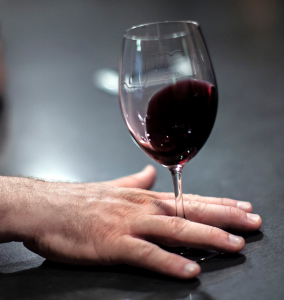 practice: don't lift the glass when you swirl. Set the glass on the table or counter, hold the base down with your index and middle finger, then start moving the glass around in circles. You simply won't spill wine this way.
practice: don't lift the glass when you swirl. Set the glass on the table or counter, hold the base down with your index and middle finger, then start moving the glass around in circles. You simply won't spill wine this way.
And here's a bonus! What's the difference between aroma and bouquet? A wine's aroma typically refers to the pleasant smells in a wine that give it specific character (varietal character). We say that Merlot has aromas of cherry and Chardonnay has aromas of tropical fruit. A wine's bouquet comes from the smells created by the winemaking process or the wine's aging. When we smell oak, for example, that's considered to be part of a wine's bouquet.
So, swirl that wine! It's all part of the pleasure...and the fun!
The Difference You Need To Know Between Tannin And Acid
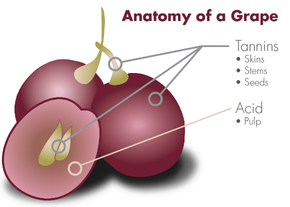 Working in the tasting room at Yao Family Wines in St. Helena, perhaps the second most common question we receive from both beginners and experts alike is, “what's the difference between tannin and acid?” (the first most common is, “How tall is Yao Ming?”). This is a critical question, as the two can be quite easily confused. Let’s shed a little more light on the subject.
Working in the tasting room at Yao Family Wines in St. Helena, perhaps the second most common question we receive from both beginners and experts alike is, “what's the difference between tannin and acid?” (the first most common is, “How tall is Yao Ming?”). This is a critical question, as the two can be quite easily confused. Let’s shed a little more light on the subject.
First, let’s take a closer look at tannin. Tannin is a naturally-occurring phenolic compound, found in the skins, seeds and stems of a grape. It can also be added to a wine through aging in an oak barrel. Phenols typically add a flavor of astringency and bitterness to a wine, which may sound awful, but that same quality is what gives a wine balance, structure and complexity, allowing it to age longer. Best of all, tannins provide the antioxidants in wine that have all the health benefits. Although these phenolic compounds are found in all wines in various amounts, we usually associate tannins with red wines, as the juice has extended contact with the phenol-rich skins, stems and seeds during fermentation.
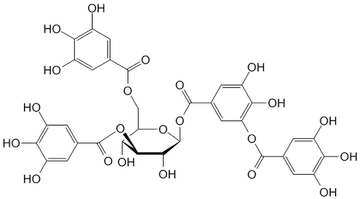
Tannin is often confused with "dryness" because tannin imparts a dry feeling in your mouth. Dry, however, is a wine term used to denote the level of sweetness in the wine. Again, it's the astringency that creates the feeling of your cheeks being sucked in and themoisture evaporating from your mouth. This is one of the most primary characteristics of tannin.
Acid, on the other hand, is what gives wine it’s refreshing, flavorful sensation. Acidity is apparent in all fruit, be it grapes, lemons or tomatoes (yes, tomatoes are a fruit). Grapes start out as being entirely acidic, and as they develop the acid turns into sugar. Harvesting grapes at a key balance point between sugar and acid is critical, as is allowing the sugar to convert to alcohol in the fermentation process so the acid is lively and predominant. Too little acid and the wine can seem flabby and lifeless. Too much acid and the wine will be harsh and undrinkable. Acid is also determined by the climate in which the grapes were grown as well as the soil type and physiology of the grape itself. Higher acidity denotes a wine from a cooler region, such as Northern France. Lower acid wines come from countries with warmer weather, such as parts of Australia.
The primary types of acid that are key to winemaking are tartaric, malic and citric. Perhaps the most important element of acid management in winemaking is Malolactic Fermentation. Also called malo, this is a secondary fermentation that converts the tangy and harsh malic acids into creamier and softer lactic acids. When you think of the buttery characteristics of a Chardonnay, for example, this is because the wine has undergone malo to create a rounder mouth feel.
Tasting the Difference Between Tannin and Acid:
Tannins taste bitter on the front-inside of your mouth and along the side of your tongue; Acid tastes tart and zesty on the front of your tongue and along the sides.
Acid makes your mouth feel wet; Tannin makes your tongue feel dry.
With tannins, you feel a lingering bitter/dry feeling in your mouth after you swallow; With acid, your tongue feels gravelly against the roof of your mouth. Acid can also activate the saliva glands underneath your tongue.
Here's a fun way to explore the difference between tannin and acid. Get yourself two bottles of red wine. The first should be a big, bold Napa Cabernet, and the second should be an Italian red like a Valpolicella or Chianti (avoid hearty italians like Super Tuscans and Sangiovese). Taste them side-by-side, trying the Italian wine first. You'll notice with the Chianti a certain kind of effervescence in the wine. This is the lively acid inherent in Chiantis. The Napa Cab, on the other hand, will probably suck all the moisture from your mouth. This is the tannin in action.
So what did you think, tasting those side-by-side? Leave us a comment below and let us know!
Five Things You Need To Know For Rosé Season
With the first buds of spring fast approaching, Rose season is just around the corner. Rosé is typically the first release of the year for most winemakers, due to its relatively quick winemaking process. If you've explored the joys or Rosé, then you're as excited as we are for this time of year. But If you're new to the world of this delicious, complex and versatile wine, we'd like to offer you five things you should know to make your Rose adventure a great one.
1. Rosé Isn't A Cheap Wine - It's Just Inexpensive To Make. With the possible exception of a Chateau D'Esclans, you just don't see any $100 Rosé. In fact, you're hard pressed to find a Rosé over $40. So is it a cheap wine? Not at all. It's simply inexpensive to make. In essence, Rosé is a by-product of making other wines. Rosé is the run-off juice created through one of three processes used in making both red and white wines. In this respect, you get two wines to sell for the cost of one.
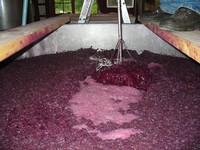 The maceration method is most commonly used for Rosé. Maceration is when the grapes are pressed and sit in their skins. This istypically done in red wine production, where maceration usually lasts throughout the fermentation. For Rosé, the juice is separated from the skins before it gets too dark. For lighter varieties, it can last a day or longer. For darker varietals, like Merlot, the process sometimes only lasts a few hours.
The maceration method is most commonly used for Rosé. Maceration is when the grapes are pressed and sit in their skins. This istypically done in red wine production, where maceration usually lasts throughout the fermentation. For Rosé, the juice is separated from the skins before it gets too dark. For lighter varieties, it can last a day or longer. For darker varietals, like Merlot, the process sometimes only lasts a few hours.
The Vin Gris method is when red grapes are used to make a nearly-white wine. Vin Gris utilizes extremely short maceration times. This style is popular for light red varietals like Pinot Noir, Gamay or Cinsault.
The Saignée method is actually a by-product of red winemaking. During the fermentation of a red wine, about 10% of the juice is bled off. This process leaves a higher ratio of skin contact on the remaining juice, making the resulting red wine richer and bolder. The leftover bled wine or “Saignée” is then fermented into Rosé. Wines made from the Saignée method are typically much darker and more dry than Maceration Method wines.
2. Rosé Can Be Both Dry And Sweet. Repeat after me: "White Zinfandel is not Rosé." Rosé has received a bad rap from other pink, sweet wines. The more you taste, however, the more you'll realize that some Rosés can be as dry as their red and white wine counterparts. It all depends on when the fermentation process is completed or suspended. Rosés that are allowed to complete their fermentation use up all the sugar in the process and are therefore dry. Rosés that are stopped during the fermentation process before all the sugar is converted to alcohol can be less dry. We tend to like a little sweeter Rosé for sipping by the pool, and a little dryer for eating with a meal.
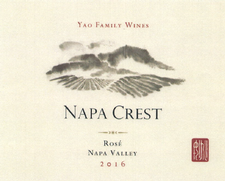
3. Don't Know Which Wine To Pair With Your Meal? Get A Rosé. Rosé is the ultimate food wine, mostly because it is typically lower in alcohol and higher in acidity. In effect, Rosés have the flavor characteristics of both red and white wines. Rosés have both floral and herbacious notes, and often have both tropical fruit and dark fruit flavors as well. They're both subtle and complex, making them a perfect pairing for almost any dish. So get adventurous: Take that Summer Sipper off the porch and into the dinning room!
4. Rosé Can Be Made From Almost Any Grape. Nearly every wine grape you can imagine has been used to make Rosé. Some of the most popular varietals include Grenache, Syrah, Mouvedre (The Holy Trinity of Rosé blends in France), Pinot Noir, Cinsault, Carignan and Sangiovese. Cabernet Sauvignon and Merlot are especially popular in Napa Valley. So which to choose? A good rule of thumb is this: If you like the flavor profile of a certain varietal, seek that varietal out in your Rosé. In other words, if you like the way Cabernet tastes, drink a Rosé of Cabernet.
5. To Chill Or Not To Chill? If Rosé is kind of a red wine and kind of a white wine, then should it be served chilled or at room temperature? Generally, when you lower the temperature of a wine, it reduces the biting effect of the alcohol, making it "easier" to drink. This is why Rosé is such a sought-after spring & summer wine: A wine with a lower alcohol profile that's also chilled goes down fast, smooth and refreshing.
On the other hand, colder temperatures can mask the subtleties of flavor in a wine. You may be short-changing your experience if you drink a Rose of Cabernet, Merlot or even Pinot Noir at too cold a temperature. We recommend you drink your Rosé at around 60-65 degrees.
